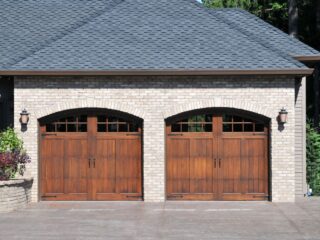
Hanging sliding closet doors can be a great way to add functionality and style to your space. Whether you’re replacing old doors or installing new ones, it’s important to follow a step-by-step guide to ensure a successful installation. In this article, I’ll walk you through the process of hanging sliding closet doors, from measuring and preparing the opening to attaching the tracks and hanging the doors.
The first step in hanging sliding closet doors is accurate measurement. Start by measuring the width and height of the doorway where you plan to install the doors. It’s crucial to measure accurately to ensure that your doors fit properly. Once you have your measurements, take them with you when selecting your door kit or individual components.
How to Hang Sliding Closet Doors
When it comes to choosing the right sliding closet doors, there are several factors to consider. Whether you’re renovating your home or simply updating your closet space, selecting the perfect doors can make a significant difference in both functionality and aesthetics. In this section, we’ll explore different types of sliding closet doors, considerations for size and style, and how to properly measure the opening for a proper fit.
Different Types of Sliding Closet Doors
Sliding closet doors come in various styles and materials. Understanding the options available will help you make an informed decision based on your specific needs and preferences. Here are some popular choices:
- Bypass Doors: These are the most common type of sliding closet doors, where two or more panels slide past each other on tracks. They provide easy access to one side of the closet at a time.
- Bi-fold Doors: Bi-fold doors consist of multiple panels hinged together that fold open when pulled. They are ideal for smaller spaces as they require less clearance compared to bypass doors.
- Pocket Doors: Pocket doors slide into a hidden compartment within the wall, maximizing floor space and creating a seamless look when fully opened.
- Mirrored Doors: Mirrored sliding closet doors serve a dual purpose by providing full-length mirrors while also making the room appear larger.
Considerations for Size and Style
Before purchasing sliding closet doors, it’s crucial to assess the size requirements and overall style of your space. Here are some key considerations:
- Measurements: Accurate measurements are essential to ensure a proper fit. Measure both the width and height of the opening, taking into account any trim or molding that may affect installation.
- Style Compatibility: Consider how well different door styles complement your existing decor theme. Whether you prefer a modern, traditional, or minimalist look, choose doors that harmonize with the overall aesthetic of your room.
- Material and Finish: Sliding closet doors are available in various materials such as wood, glass, aluminum, or composite. Each material offers different benefits in terms of durability, maintenance requirements, and visual appeal. Additionally, consider the finish options like painted, stained, frosted glass, or custom designs to enhance the desired look.

Measuring and Preparing the Opening
Gathering the Necessary Tools
Before you begin hanging sliding closet doors, it’s important to gather all the necessary tools. Having everything ready will make the process smoother and more efficient. Here are some essential tools you’ll need:
- Tape measure: This will help you accurately measure the dimensions of your closet opening.
- Level: Ensuring that your doors are level is crucial for proper operation.
- Screwdriver or power drill: Depending on the type of screws used, you’ll need either a screwdriver or a power drill with appropriate bits.
- Pliers: These will come in handy for removing any existing door hardware.
- Safety goggles and gloves: Don’t forget about safety! Protect your eyes with goggles and wear gloves to avoid any potential injuries.
Removing the Existing Door and Hardware
Now that you have your tools ready, it’s time to remove the existing door and hardware. Start by carefully lifting off the old door from its track. If there are any screws holding it in place, use a screwdriver or power drill to remove them.
Next, focus on removing any additional hardware attached to the closet frame or floor. This may include handles, hinges, guides, or tracks. Use pliers or a screwdriver as needed to loosen and detach these components.





